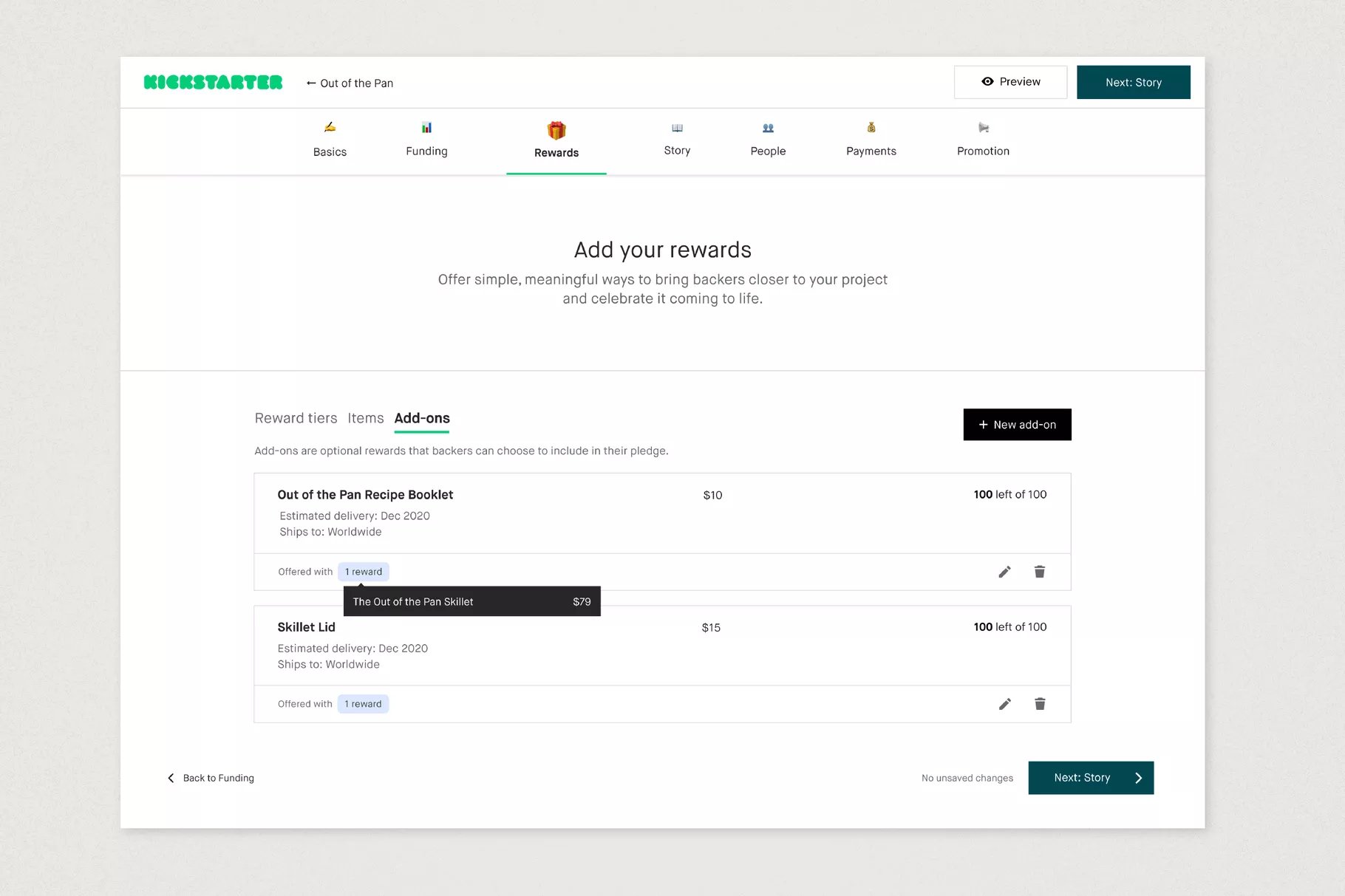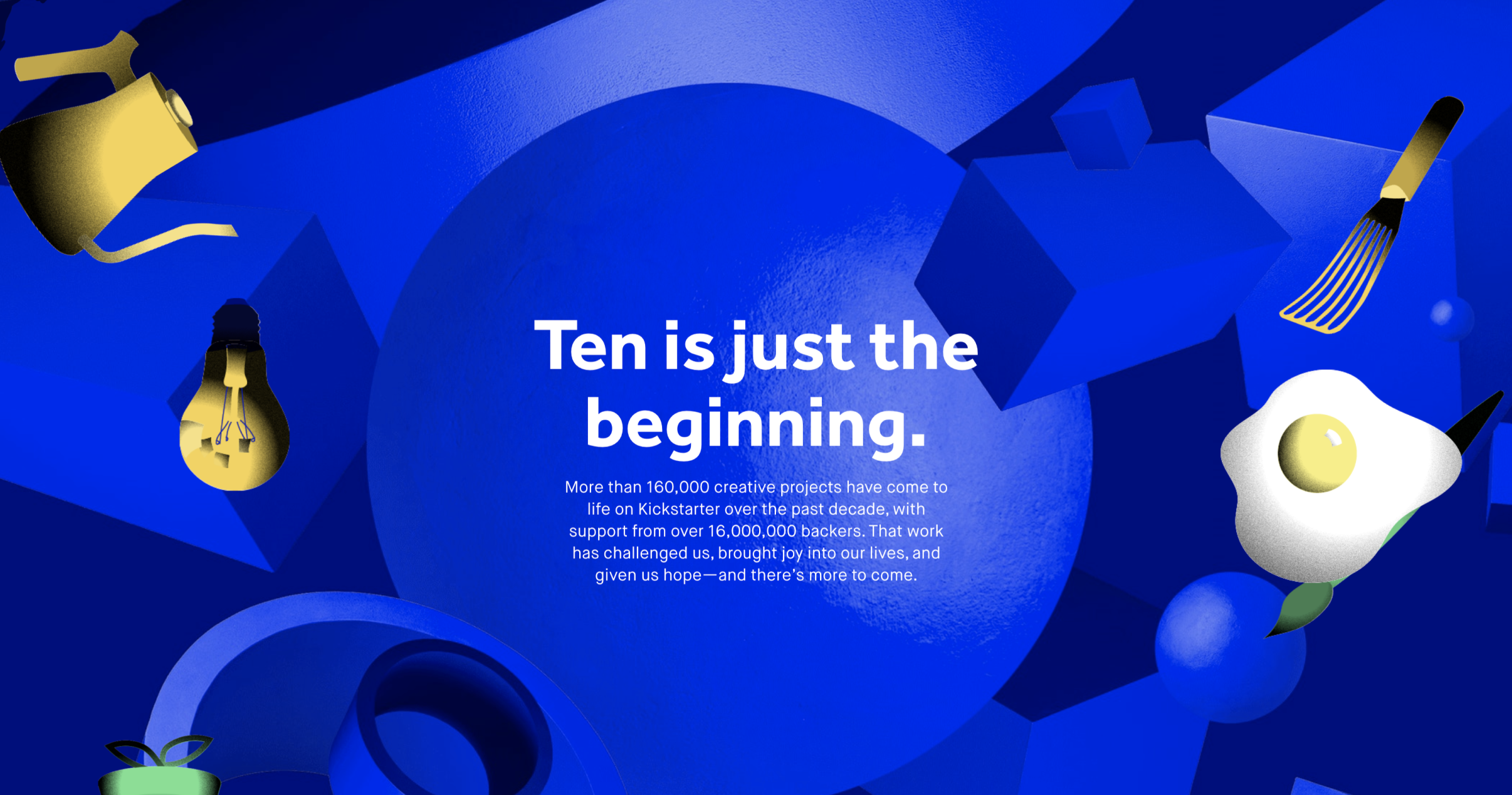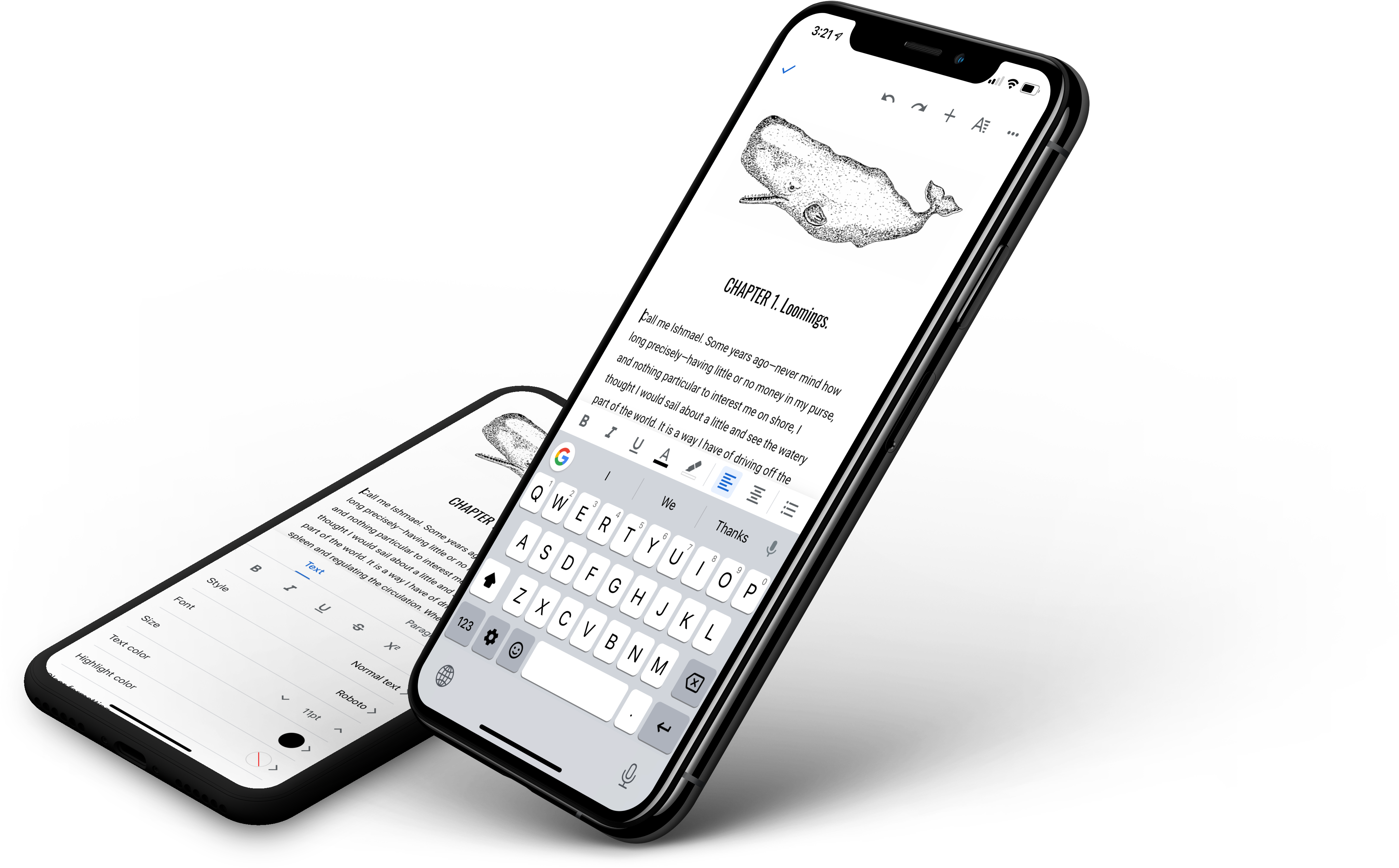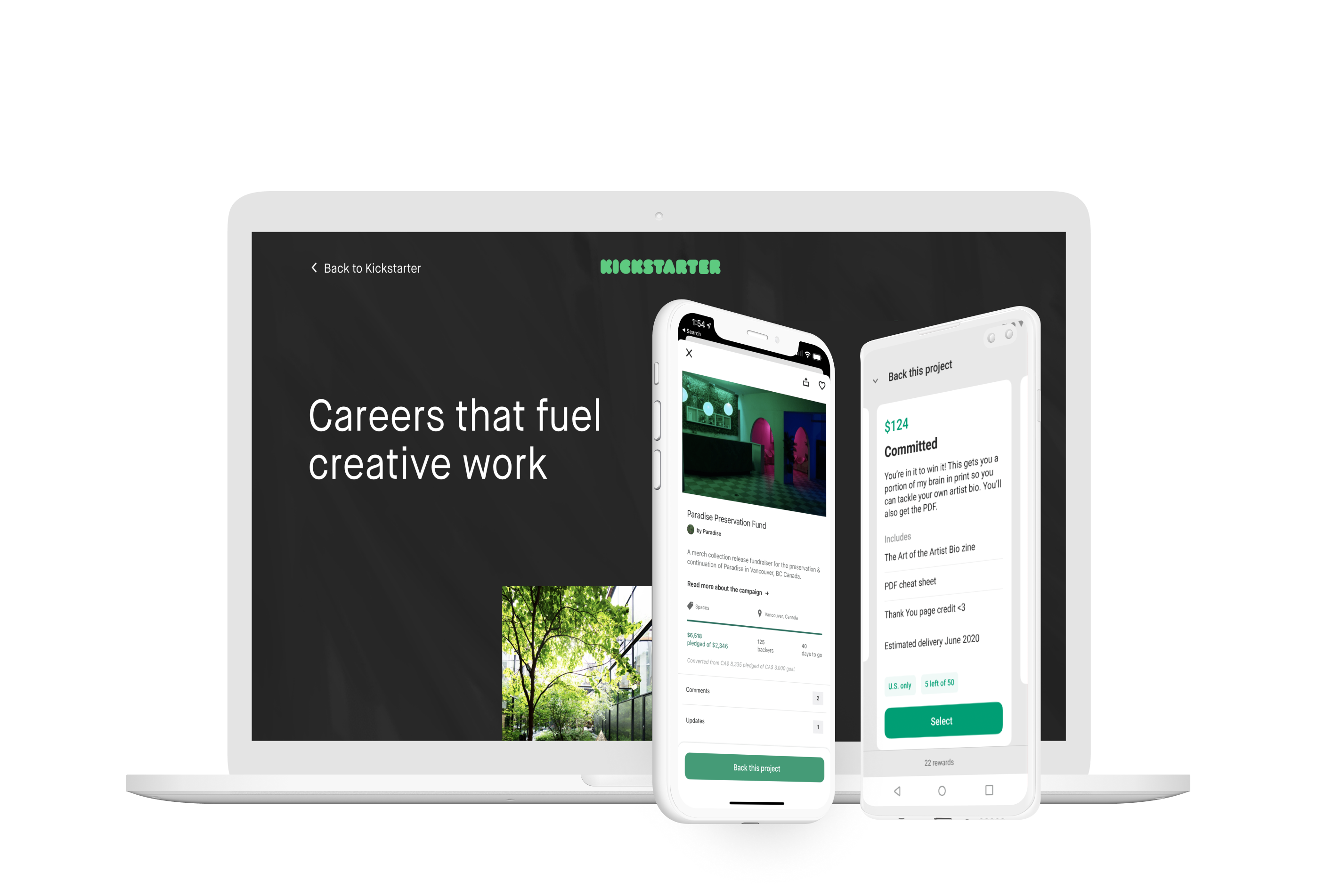
I hired and led a world-class product team, responsible for a clean, consistent and accessible experience across web, iOS and Android.
Creating a design organization
The year before I joined Kickstarter, the product organization had experienced close to a 90% turnover. I saw it as a unique opportunity to build a team from scratch while working on a beloved brand.
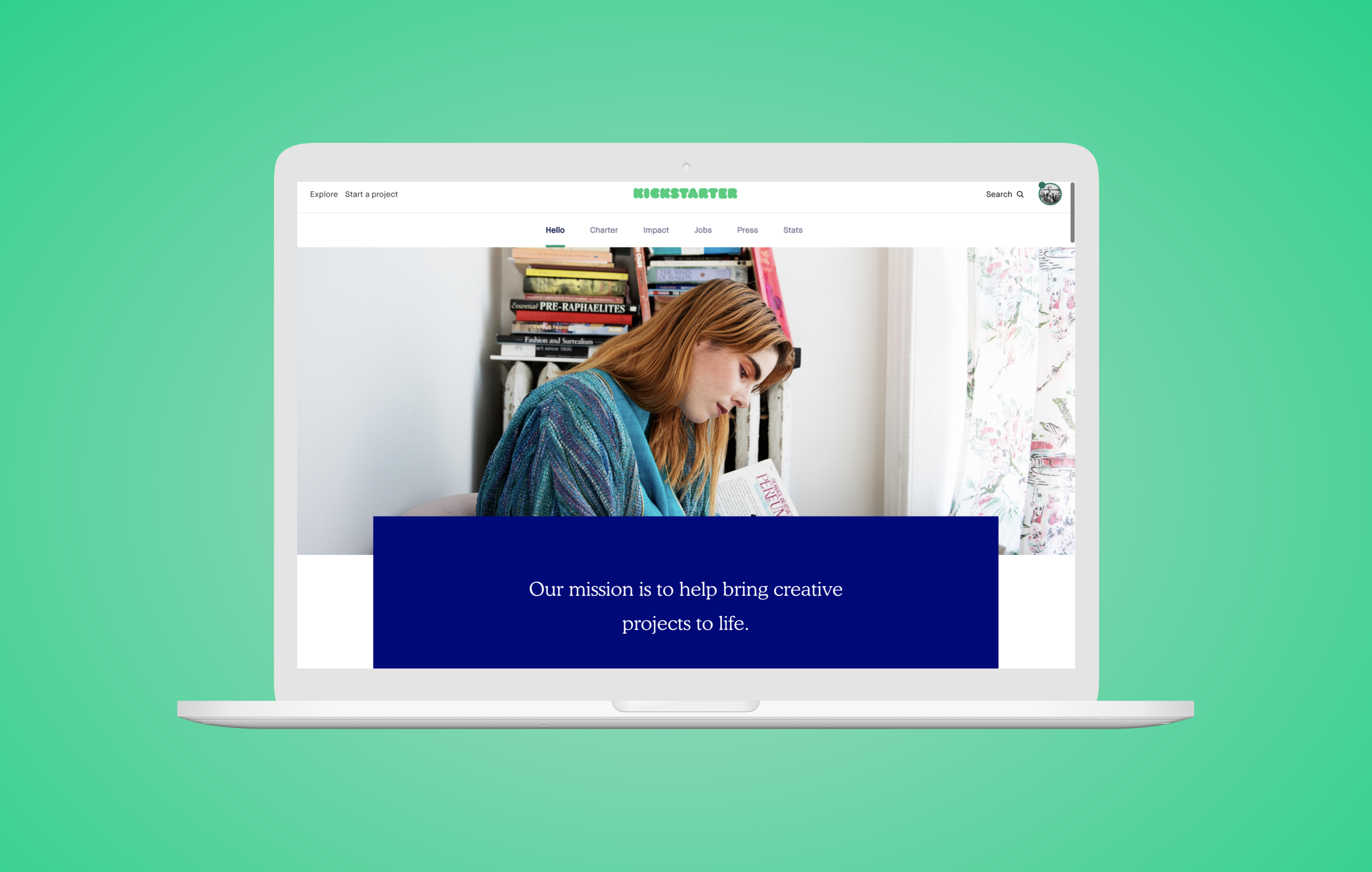 Kickstarter's mission is to help bring creative projects to life.
Kickstarter's mission is to help bring creative projects to life.
Optimize the hiring process
As I began to focus on hiring designers to support the company's various parallel initiatives, I noticed a lot of inefficiencies in the hiring process. Specifically, we didn't have confidence that a candidate's portfolio represented the quality of work they would bring to Kickstarter, and candidates were often brought back for multiple rounds because the interviewers couldn't agree if that person was the right fit for the role. Interviews seemed to get stuck perpetually at the "on-site" stage.
- 1 Phone screen
- 2 On-site 1:1's
- 3 Offer
One of the benefits of my experience at Google is that I've conducted a lot of interviews. I was able to cherry-pick parts that made sense for Kickstarter and streamline the process so that we could hire a significant number of people in a minimal amount of time. Here are some of the changes I introduced:
- At-home exercise. While some consider this controversial, there's no better way that I know of to filter for a person's individual abilities against a portfolio where a larger team is usually involved.
- Group interview panel. On-site interviews begin with a group panel, where the candidate walks through their at-home exercise and portfolio case studies. This lets the panel start with the same first impression, and saves candidates from having to answer the same repetitive questions about their presentation in subsequent 1:1's.
- Interviewer lenses. Representatives from across the product function (PM, Design, Engineering) participate in the interview, and designers represent the many facets of the design process. Rather than have 3 designers do the same shallow portfolio review, we dive deep into areas of responsibility like "problem solving", "core skills", and "strategic thinking."
- 1 Phone screen
- 2 At-home exercise
- 3 On-site panel
- 4 Offer
At its largest, I scaled my team to 8 product designers, 1 UX writer, and a translation consultant. This group was responsible for all experiences across Web, iOS, and Android, in all markets. We also led initiatives related to accessibility and internationalization.
Blaze a clear growth path
I believe that unspoken expectations are premeditated resentments. Throughout my career, I've done my best work when I've known what was expected of me, and how my contributions would be measured.
I've observed a pattern in the industry that I call "title bloat," where people are called "senior" or "director" without the requisite skills and experience. When a role's expectations aren't clear, it can make hiring and promotions extremely murky and qualitative, when it should be anything but.
I created a "skills matrix" which provided clear expectations for each level of seniority on my team. This document was used during the hiring process to calibrate level, as well as during the bi-annual review process for existing team members to set goals and understand their progress towards their next career milestone.
The skills matrix was so well received that it was later adopted by the Engineering and Product Management organizations.
Product process and culture
I established several core practices that I believe are essential to any design team's success.
Integrate a consistent design critique process
Every design project at Kickstarter began and ended with a critique. Designers scheduled as many critiques as they found useful, but at a minimum, we expected to see work at an early, unrefined stage, which we called "Studio", and again before it went into development, which we called "Review".
Studio
Open-ended, divergent ideation
General
Iterative feedback, validation
Review
Pre-implementation, fit and finish
There were no preset requirements in terms of what they needed to present. The critiques existed to be of value to the designer, not to the stakeholders. By default, the entire design team was invited to every session, as well as:
- A design systems representative
- A senior PM
- A system integrity representative
- A UX writer
- Our in-house legal counsel
The presence of a legal stakeholder might seem controversial, especially during the early and most vulnerable stages of the design process, but we were very lucky to have a product-minded legal team who helped us anticipate potential issues and explore creative solutions far earlier in the process than if we had waited to include them.
This critique process had several benefits. It ensured that a representative sample of the company was aware of on-going design work at essential milestones. It also taught and nurtured a culture of being able to give and receive feedback.
Reboot design systems and tooling
I put in place a design systems team (comprised of design, copy, and engineering stakeholders) which met regularly to discuss existing patterns, proposed changes to the system, and upcoming trends worth considering. They evaluated patterns for consistency with the larger system as well as accessibility and internationalization concerns.
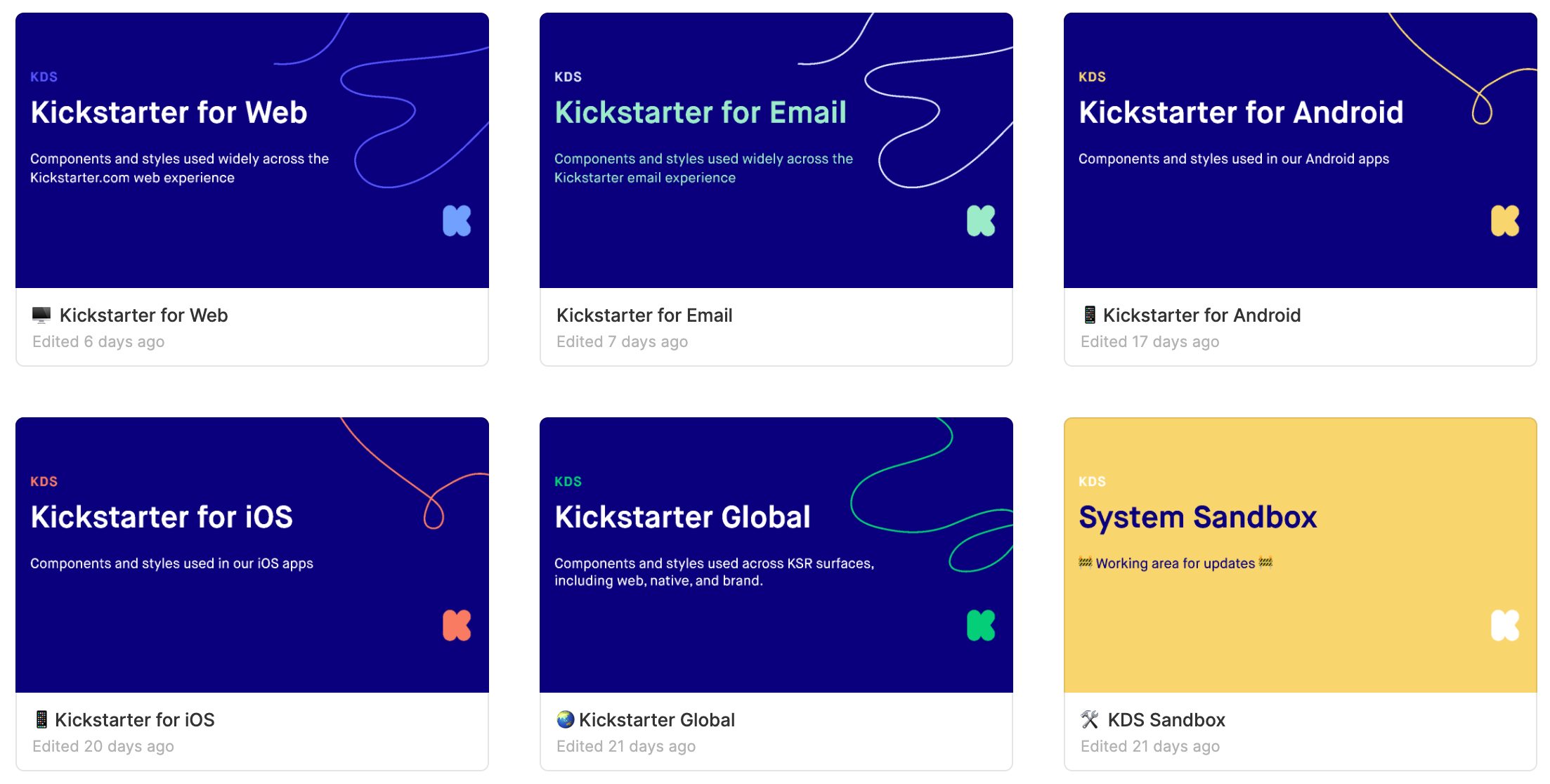 Our Figma shared library collection, across our platforms.
Our Figma shared library collection, across our platforms.
The world of design systems and related tooling moves quickly, and it's important to find a balance between continuing to invest in and maintain your existing infrastructure, and knowing when a new approach might introduce increased efficiency and productivity.
When I joined Kickstarter, the design team was using a mixture of Sketch and Dropbox. I'm a big believer in the right tool for the job - Dropbox was falling short of our needs when it came to collaboration and knowing with certainty that you were working on the latest version of a design.
We explored Sketch-specific design management tools like Abstract and InVision before realizing that we needed to re-evaluate our entire stack. As a team, we made extensive use of Google's G Suite for writing and communication, and we loved the real-time collaboration, built-in versioning, and instant sharing features. The clear design equivalent was (then) new-comer "Figma". I worked with my team to coordinate a trial period where we ran both tools side by side, and ensured that our peers in Engineering Product Management could still collaborate with us. It was a clear winner. We made the switch and haven't looked back.
Figma allows us to have shared libraries of patterns, components, and styles that are always in sync and up-to-date. It also allowed us to reduce our budget costs by eliminating 3 other software licenses (Sketch, Abstract, and InVision.)
Make user research a core practice
When I arrived at Kickstarter, there was an interest in user research, but the organization lacked systems and processes which created a vacuum where anecdotal data samples and personal experiences were used to shape product decisions.
I created a system that passively recruited participants - kickstarter.com/research, allowed filtering by screener criteria, facilitated scheduling, and enabled participant compensation. This system made it incredibly easy to include user research as part of the design process.
After a couple of months, we went from having zero qualified participants to more than 500k in the research pool. We saw significant adoption of the user research practice - not only with the design team but also within product management.
User research is now a key component of almost every project at Kickstarter. We use it for initial validation of design explorations, conduct usability, and accessibility testing during development, and follow up with users after release to measure success and impact.
Access to this resource demonstrated the value to the organization, and we have since hired two full-time user researchers to expand the program.
- ✔️ Passive opt-in
- ✔️ Screener questions
- ✔️ Legal approved NDA
- ✔️ Team training
- ✔️ Participant scheduling
- ✔️ Compensation approval
Select projects & initiatives
At this point in my career, my success is measured by the impact my team can have through their work. I am no longer pushing pixels daily, but included below are select projects that my team was responsible for during my time at Kickstarter.
